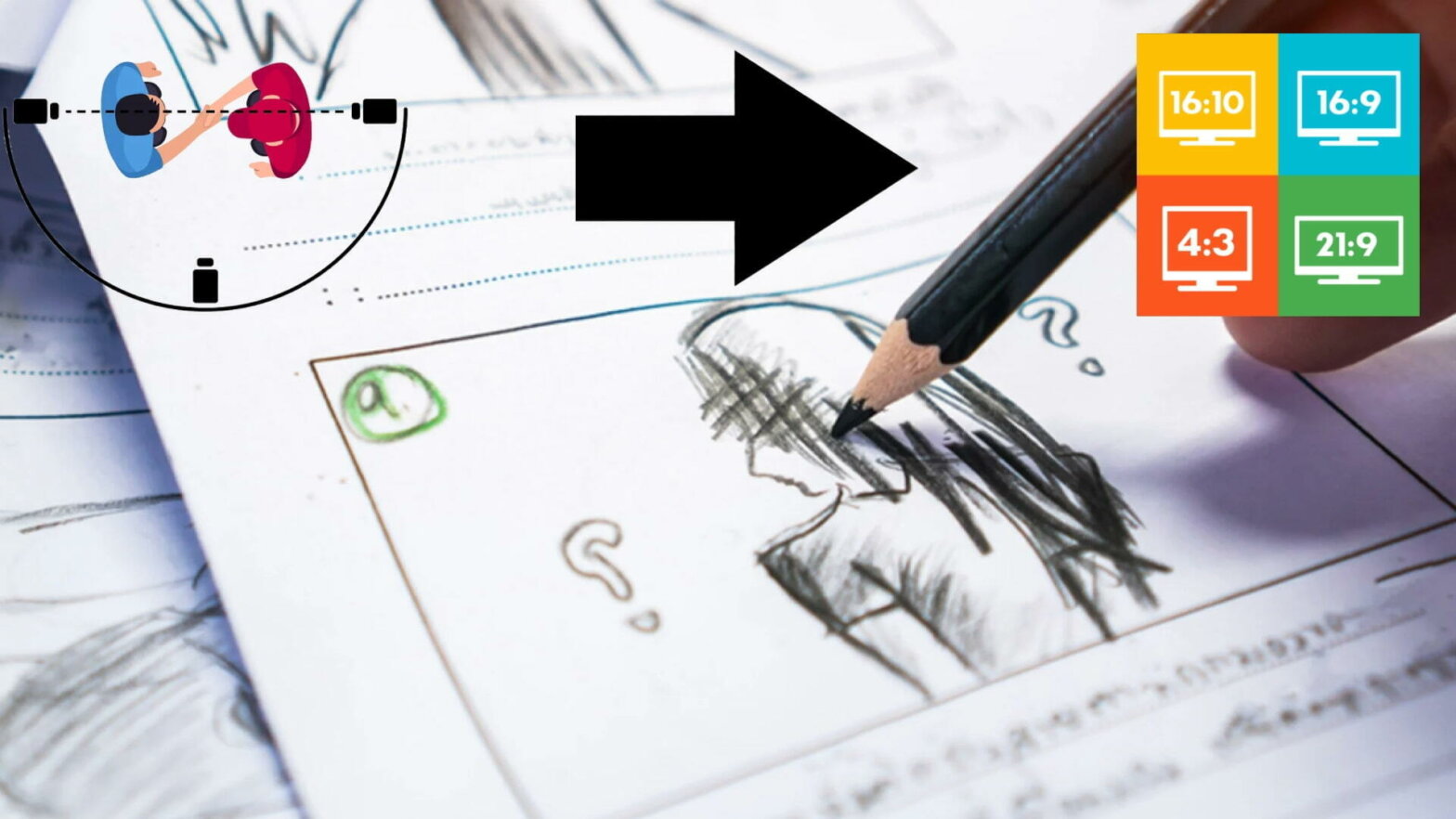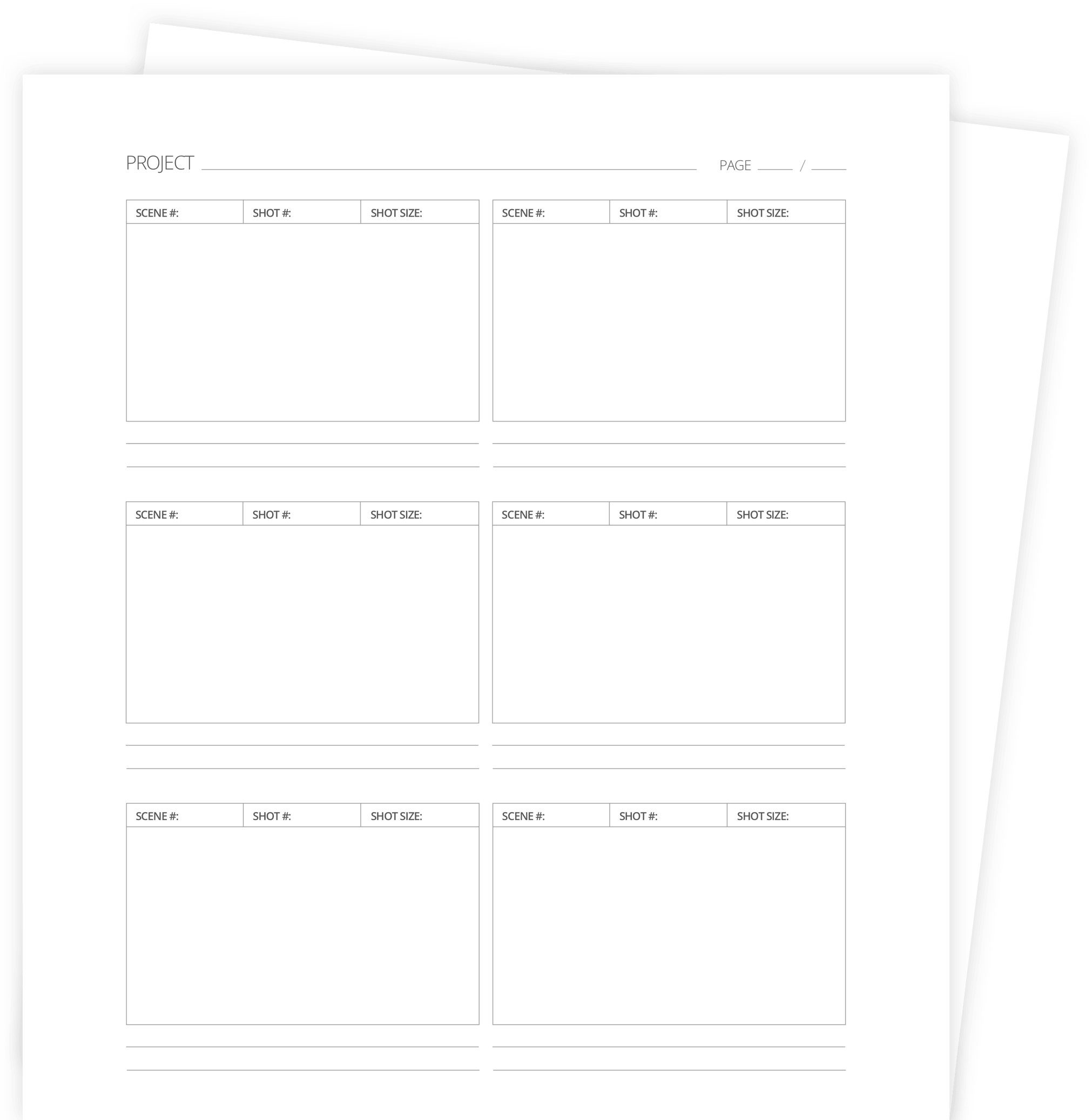There is no such thing as “storyboard rules” per se. However, there are standards and expectations that professionals use that you should know. In this post, we’re going to review the do’s and don’ts of storyboarding so that you can find your own style without making avoidable mistakes. Let’s get started.
Storyboard Rules
1. Each panel should tell a story
The storyboard is a filmmakers first chance to turns words on a page into a story told with images. One of the generally accepted storyboarding rules is that every shot should be represented, there are exceptions and considerations to make.
For complicated blocking and staging in a particular shot, multiple panels can be created to track the movements. However, you might also be tempted to do a multi-panel shot when a single panel will do.
Be economical with your storyboards. If a single panel can communicate everything for that particular story beat, do it.
Storyboard Tips
2. Consider the aspect ratio
One of the benefits of storyboarding is the ability to compose your shots. Using the basic rules of composition, deciding where you place your characters in relation to the rest of the frame is a key step.
For a refresher on the storytelling value of choosing the right aspect ratio, here's our breakdown.
Storyboarding and Aspect Ratio • Subscribe on YouTube
You can't really account for composition if you haven't chosen your aspect ratio. Are you planning for a 4:3 aspect ratio or perhaps 2.39:1? Once you've nailed down your frame size, you can more accurately and strategically plan your compositions.
If you're using dedicated storyboarding software like StudioBinder's storyboard creator, this is an easy setting to manage. In this overview, you can see how changing the aspect ratio is done with a simple click.
StudioBinder Storyboard Creator • Create Your Own Storyboard
Storyboarding Tips
3. Account for movement in composition
Following this idea of composition in storyboarding, one of the most important considerations is movement. To designate both camera and character movement, storyboard arrows are used.
Let's imagine a scenario in which a character is supposed to move from right to left in a shot. The character would be placed on the right side of the frame with enough room on the left side for an arrow pointing in that direction.
In the case of storyboarding camera movement, let's say you want to push into a close-up of your character. If the movement is extensive, you'd be better off to create a multi-panel movement (see above). If the movement is minimal, use a single panel and frame your character at the end point of the camera movement instead of the beginning.
Related Posts
Rules of Storyboarding
4. Keep your continuity
Jumping from panel to panel, it can be easy to forget some of the basics surrounding continuity. It goes without saying that continuity breaks in a storyboard can be just as disruptive as continuity breaks in a film.
For example, screen direction is critical. If your character in Panel 1 is looking towards screen left but in Panel 3 they're looking screen right. Unless there is a natural reason for the character to suddenly be looking in a different direction, this is a mistake to be avoided.
This adherence to continuity also extends to relative character sizes, positions, camera or character movement — anything that would create confusion between shots.
Storyboarding Rules
5. Obey the 180-Degree Rule
You may not be a cinematography or an editor but you should be mindful of the 180-Degree Rule when storyboarding. Following the previous discussion on continuity, this is one of the most important considerations.
Here's a breakdown of why this rule matters so much.
Storyboarding Rules • Subscribe on YouTube
The 180-Degree Rule basically states that the camera should stay on one side of an imaginary line created by the characters in a scene. Part of your job as the storyboard artist is to think ahead and make sure the storyboard is as clear and legible as possible.
Want to start practicing? Download our FREE storyboarding templates below.
Free downloadable bonus
FREE Storyboard Template Downloads
If you prefer the old-school, pen and paper method of storyboarding, download our FREE printable templates. Included are 60+ files for Word, Illustrator, Photoshop, and PDFs. You can also choose various layouts between 2- and 16-panel sheets in landscape or portrait.
UP NEXT
Get inspired with storyboard examples
We covered some of the basic storyboarding rules. Now, to see some of these in action, follow the link to see some of the best storyboard examples. Included are boards from Jurassic Park, Star Wars, Alien, and many, many more.
Up Next: Storyboard Examples →
Showcase your vision with elegant shot lists and storyboards.
Create robust and customizable shot lists. Upload images to make storyboards and slideshows.

